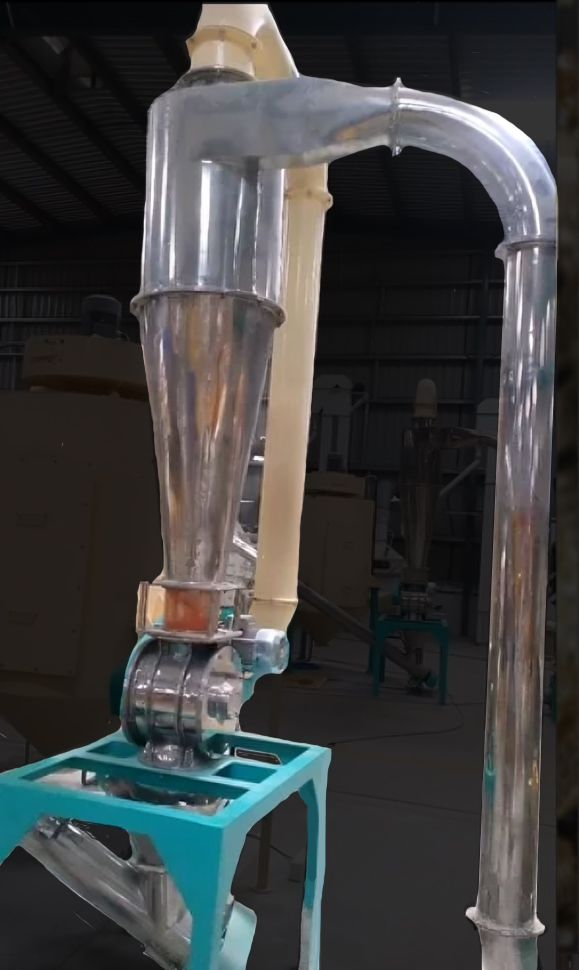
Pneumatic Conveyors


Pneumatic Conveyors :
Pneumatic conveyors are efficient and versatile systems that transport materials using pressurized air. They are widely used in various industries to move materials from one location to another, often over long distances or through complex layouts.
- Efficiency: Pneumatic conveyors offer high-speed transportation, reducing handling time and increasing productivity.
- Versatility: They can handle a wide range of materials, including powders, granules, flakes, and small objects.
- Type of Pneumatic Conveyor: Negative Pressure - Air is drawn into the conveyor, creating a vacuum that pulls the material along.
- Flexibility: Pneumatic systems can be easily integrated into existing facilities, adapting to different layouts and requirements.
- Sanitation: They are ideal for industries that require a clean and hygienic environment, such as food processing and pharmaceutical manufacturing.
- Safety: Pneumatic conveyors can be designed with safety features to prevent material spills, dust emissions, and operator injuries.
- Material Compatibility: Systems can be designed to handle specific materials, considering factors like density, particle size, and abrasiveness.
- Capacity: Conveyors can be scaled to meet varying throughput requirements, from small-scale operations to high-volume production.
- Distance and Elevation: Pneumatic conveyors can transport materials over long distances and to different levels, overcoming obstacles and terrain.
- Conveyor Type: Positive pressure or vacuum type
- Pipeline Diameter: Customizable; standard sizes range from 50 mm to 300 mm
- Pipeline Length: Customizable; typically ranges from 1 meter to 50 meters
- Material Capacity: Up to 100 cubic meters per hour, depending on material and system configuration
- Operating Pressure: Typically 0.5 to 6 bar (7 to 90 psi), depending on system design
- Vacuum Range: Typically 0.2 to 0.9 bar (3 to 13 psi)
- Power Supply: 220V/380V, 50Hz/60Hz
- Air Consumption: Adjustable; depends on system size and operation
- Temperature Range: -20°C to 80°C (materials dependent)
- Construction Material: Stainless steel, carbon steel, or food-grade materials
- Hygienic Options: Food-grade construction and finishes available
- Control Options: Manual, remote, or PLC-controlled for automated operation
- Noise Level: Below 75 dB
- Safety Features: Emergency stop buttons, pressure relief valves, and safety interlocks
- Cleaning: Easy-clean design with options for quick-access panels and tool-free maintenance
- Compliance: Meets CE, FDA, and GMP standards
- Optional Accessories: Filters, separators, dust collectors, and level sensors